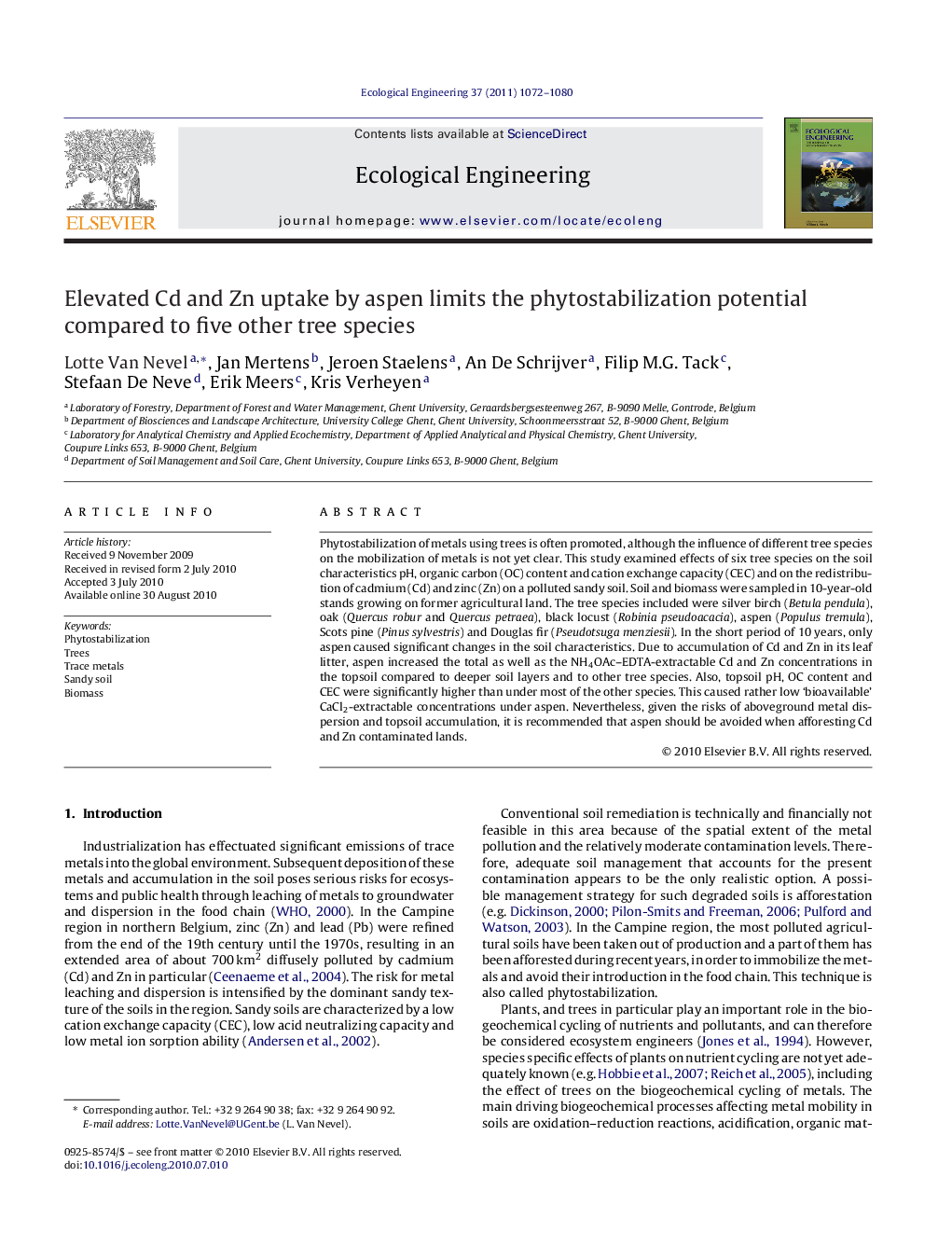| کد مقاله | کد نشریه | سال انتشار | مقاله انگلیسی | نسخه تمام متن |
|---|---|---|---|---|
| 4390379 | 1305169 | 2011 | 9 صفحه PDF | دانلود رایگان |

Phytostabilization of metals using trees is often promoted, although the influence of different tree species on the mobilization of metals is not yet clear. This study examined effects of six tree species on the soil characteristics pH, organic carbon (OC) content and cation exchange capacity (CEC) and on the redistribution of cadmium (Cd) and zinc (Zn) on a polluted sandy soil. Soil and biomass were sampled in 10-year-old stands growing on former agricultural land. The tree species included were silver birch (Betula pendula), oak (Quercus robur and Quercus petraea), black locust (Robinia pseudoacacia), aspen (Populus tremula), Scots pine (Pinus sylvestris) and Douglas fir (Pseudotsuga menziesii). In the short period of 10 years, only aspen caused significant changes in the soil characteristics. Due to accumulation of Cd and Zn in its leaf litter, aspen increased the total as well as the NH4OAc–EDTA-extractable Cd and Zn concentrations in the topsoil compared to deeper soil layers and to other tree species. Also, topsoil pH, OC content and CEC were significantly higher than under most of the other species. This caused rather low ‘bioavailable’ CaCl2-extractable concentrations under aspen. Nevertheless, given the risks of aboveground metal dispersion and topsoil accumulation, it is recommended that aspen should be avoided when afforesting Cd and Zn contaminated lands.
Journal: Ecological Engineering - Volume 37, Issue 7, July 2011, Pages 1072–1080